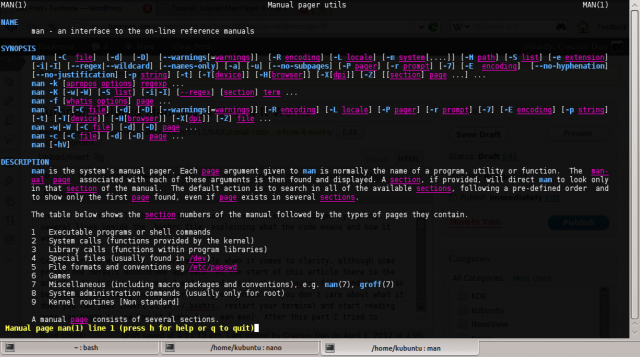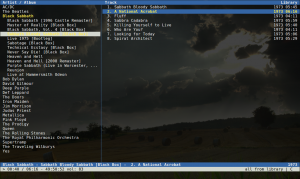In this tutorial I’ll show how to get some nicely colored man pages by adding several lines inside the .bashrc file, explaining what the code means and how it works.
GNU find is a powerful command-line utility that lets you search for files and folders in a hierarchical tree directory structure. It is the backend for all those utilities out there like the graphical searching in KDE or GNOME. However, find can be a little hard to handle at first by beginners. In this tutorial I will try to explain some of the capabilities of find, show some useful one-liners and provide more explanations regarding this command.
The older way of doing this, with gconftool-2 doesn’t seem to work anymore in GNOME 3 – used to be something like: gconftool-2 –type string –set /desktop/gnome/background/picture_filename “/full/path/to/file.png”.
However, there is still possible to change the background image, by using the gsettings tool instead. You will need the libglib2.0-bin package, which is probably already installed on your system. To change the background, use a command like the following:
This article is about two popular IM (Instant Messaging) clients that can be used in a terminal instead of a graphical environment. Both have advanced features and are based on the ncurses library.
Finch
Based on libpurple, Finch is developed by the Pidgin project, and it pretty much supports the same features of it, except for the graphical part, of course. There are many chat protocols which it supports, including AIM, IRC, MySpaceIM, WLM, SILC, Yahoo! or ICQ.
First of all I’d like to thank TuxArena’s readers for giving good feedback in the first part of this series, which overviews 15 of the tools I consider particularly useful in a console. This article overviews 10 more such tools, and most of them were suggested by you. Screenshots included.
telnet
telnet is a well-known command-line tool which uses sockets to open a TCP connection to the specified hostname and port. telnet can be primarily used for non-secure connections to connect to a HTTP server and get a file or to an IRC server for example. Escape character in telnet is ^] (press Ctrl+])
Homepage
cmus
cmus is a music player that I admire the most when it comes to command-line because it’s really powerful and has a lot of nice features. It is built with ncurses and therefore providing a text-user interface. cmus is indeed feature-rich, with several view modes and Last.fm song submission support via scripts. It supports Vi-like commands and auto-completion with Tab too. Recently I wrote a full guide on how to use cmus, you can read it here.
Homepage
TuxArena is proud to announce the second free PDF giveaway: Command-Line Guide to Audio Files in Ubuntu. You can read it online here or download the PDF from here.
The guide explains the basics of manipulating audio files in command-line mode, as well as converting to and from various audio formats, with an accent on the free formats FLAC and Ogg Vorbis. Here are the topics covered:
The first TuxArena PDF ebook “Introduction to Linux Command-Line for Beginners” is now available completely free as a Christmas gift! You can read it online here or download the PDF version.
The guide covers the following topics:





